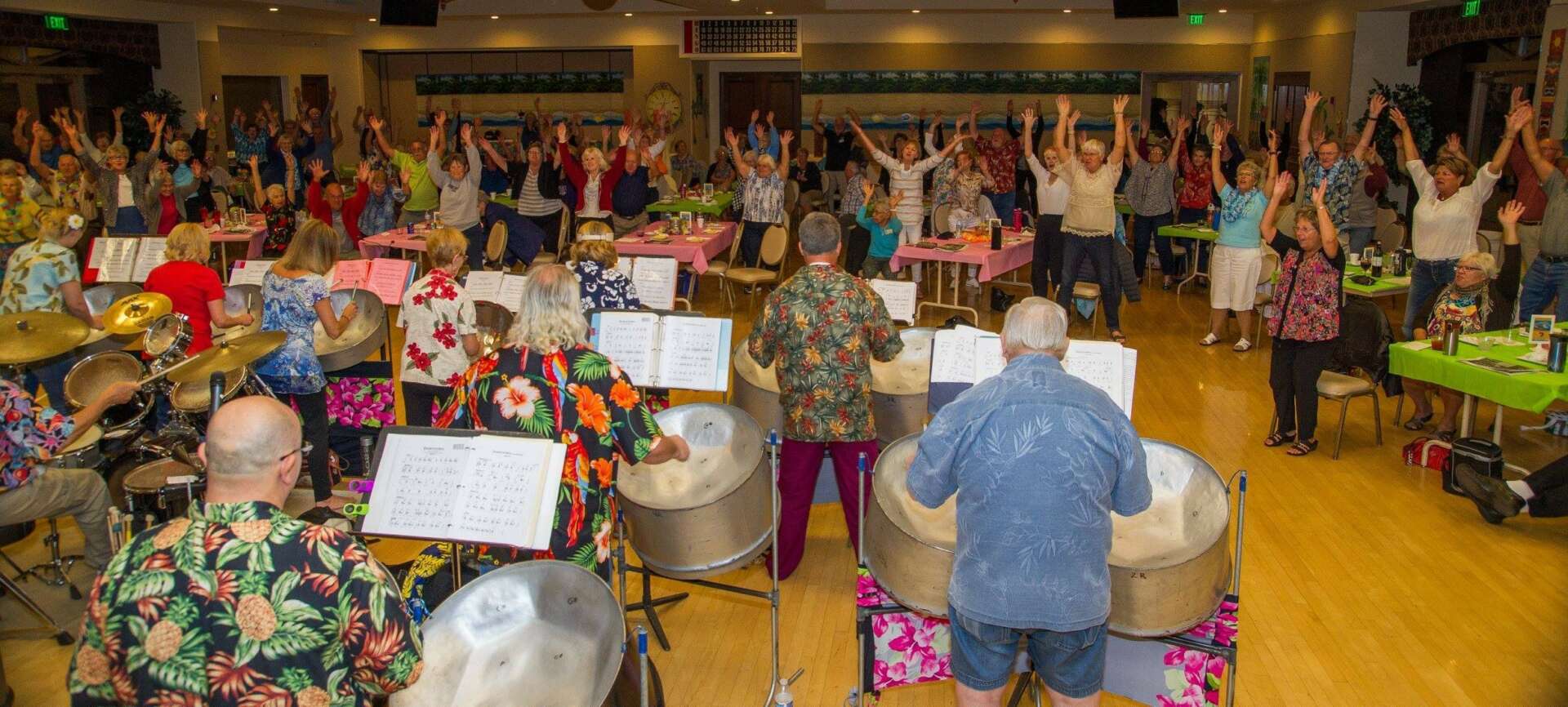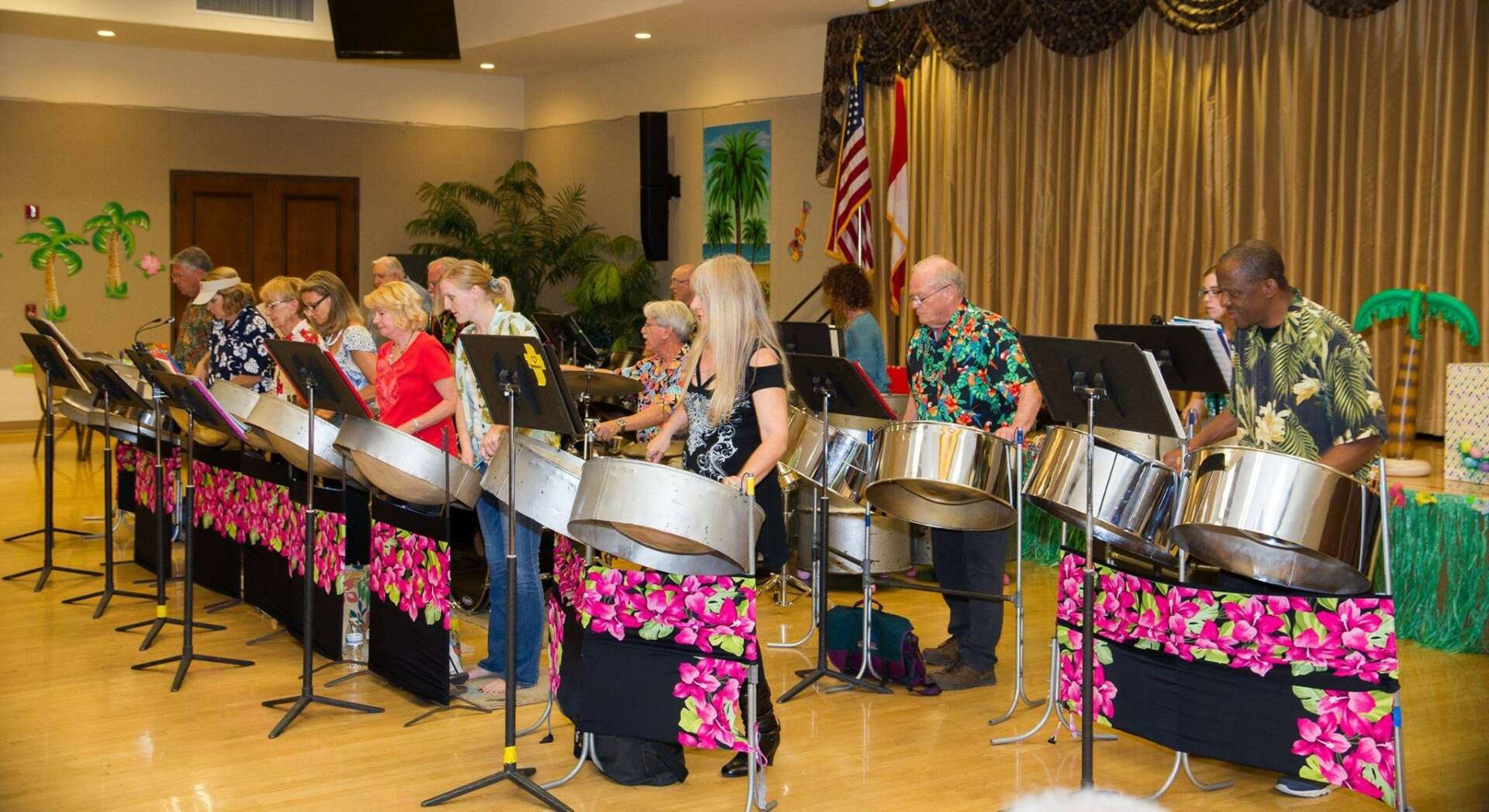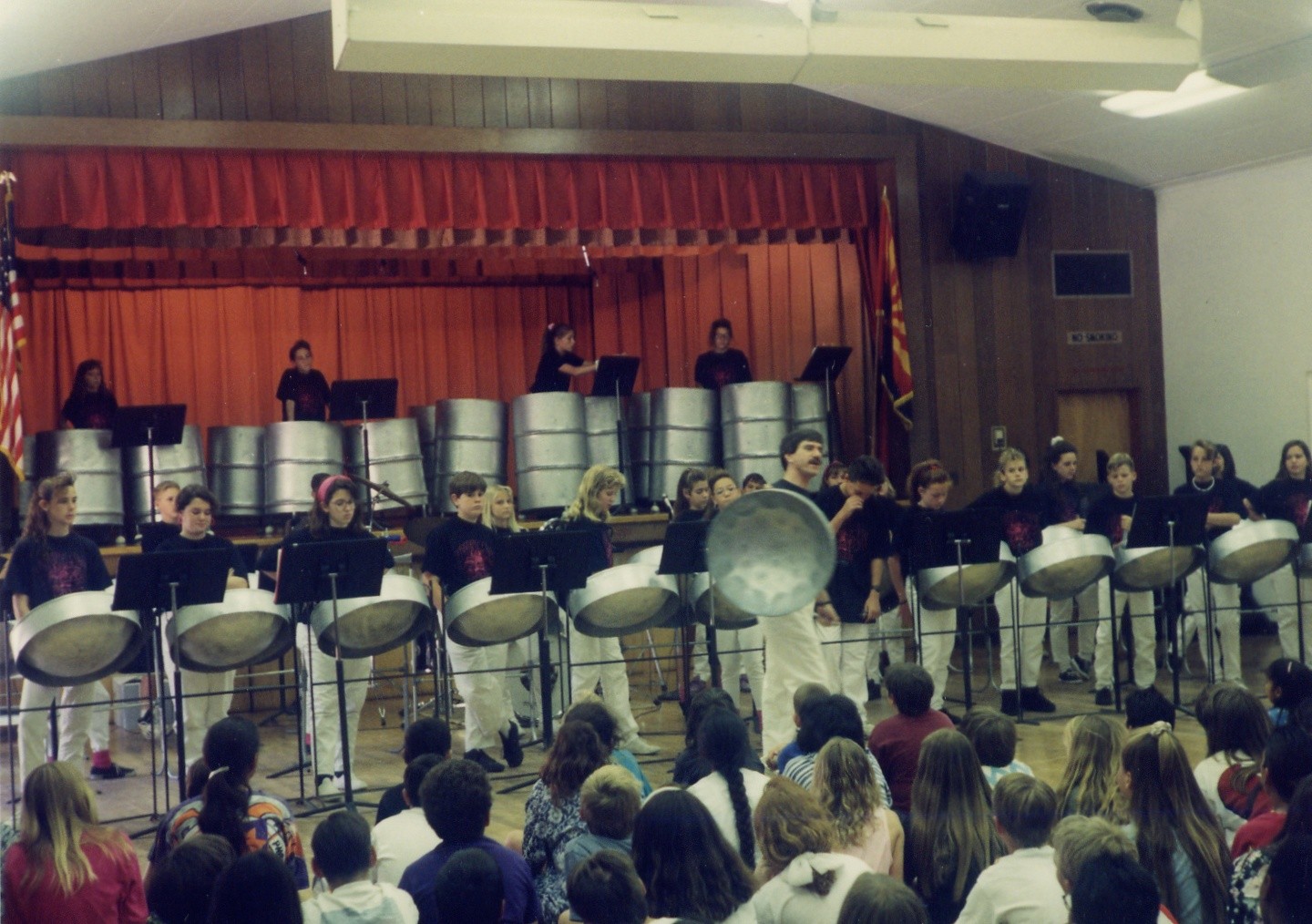We’re excited to introduce you to the always interesting and insightful Jerry Lopatin. We hope you’ll enjoy our conversation with Jerry below.
Jerry, looking forward to hearing all of your stories today. What’s the kindest thing anyone has ever done for you?
I have been involved with playing the steel pan since 1967 when I was a high school teenager growing up in Queens, New York. The steel pan (or commonly called a steel drum in the US) was a rather unknown musical instrument at that time. I was so fortunate that my older brother, Steve, connected with some friends at Queens College who were pan players. They invited him to be included as a guitarist in their steel band. Their band, the Steel Bandits, had become hugely successful, so much so that they decided to create a second steel band to fulfill some of the work that was coming their way.
The manager of the Steel Bandits was Murray Narell, the father of the two lead pan players in the band (older brother Jeff and young Andy). I was elated when my brother Steve came home from a rehearsal and told me and my younger brother, Ted, that we were invited to become members of the Steel Bandit’s backup band. We called ourselves the Steel Sound. Learning to play the steel pan was an easy transition for me as I had already been playing popular standards on the piano for years.
While all of the members of the Steel Bandits were helpful in getting us started as a new band, it was mostly Jeff and Andy who who were our primary teachers. We rehearsed in the evenings in the same facility where the Steel Bandits rehearsed, in a warehouse in Whitestone. During the day, a young steel pan builder and tuner named Ellie Mannette (from Trinidad) would use the warehouse to create and master the art form of making musical instruments from 55 gallon industrial barrels. Ellie was also integral in guiding the Steel Bandits in the correct style of playing calypsos, the music indigenous to the island nation of Trinidad & Tobago, the birthplace of the steel pan. With the passage of time, both Jeff and Andy Narell would go on to become two of the most prominent recording artists, performers and educators throughout the world promoting this amazing instrument. Ellie Mannette became known as the “Father of the Modern Steel Pan” and recognized worldwide as not just one of the first creators of the instrument, but as a leader in the innovations that were used in advancing the techniques of construction and tuning of the steel pan. I was so fortunate to be influenced by such leaders within the worldwide steel pan movement.
Aside from living in a pan players utopia, there was also the amazing influence of Murray Narell who was so generous in sharing equipment and instruments at no cost to us. He allowed us use of the facility, loaned us instruments to take home to practice, and even allowed us to use his vehicles and trailer to haul a huge array of equipment once we started performing at job sites. It was extraordinary what the Narell family did for our band.
Due to my prior study of piano, I started to arrange music for the Steel Sound based upon the basics that were used by the Narell brothers in teaching us. After becoming quite proficient at both playing and arranging, Murray Narell offered me the chance to teach at a variety of locations where he had started steel band programs in surrounding communities. It was in these settings that I became very successful at organizing and teaching pan ensembles. I would eventually move from New York to Phoenix, Arizona where I was hired as the general music teacher at Desert Winds Elementary School. With the amazing support of my principal, Fred Craig, we started the first steel pan program at a public school in the state of Arizona. What began with just three instruments in 1978 had grown into a 30+ instrument program by the early 1980’s with our 6th grade steel band (the Desert Winds Steel Orchestra) making recordings and performances which generated enough funds to allow us to become a self-funded music program at the elementary level providing our school with instruments, musical supplies, an analogue and eventually a digital in-house recording studio with an advanced midi-keyboard lab and world percussion instruments for use by our entire school.
So much of my success has been due to the unselfish generosity of others who were able to see in me the potential that I might never have realized if not for them.


Jerry, love having you share your insights with us. Before we ask you more questions, maybe you can take a moment to introduce yourself to our readers who might have missed our earlier conversations?
I was an elementary school music teacher for my entire teaching career of 36 years. For 32 years I taught at Desert Winds Elementary School in the Deer Valley School District in Phoenix, Arizona.
Due to the immense success of the steel drum program at our school, in 1997 we began an evening steel drum class for adults in our community. Once I retired in 2010, our community steel band adopted the name of what was our children’s band, the Desert Winds Steel Orchestra, which is now into our 26th year. This unique ensemble of about 20 adults is a mix of mostly non-musicians who have been able to capture the essence, the joy and fun of music making in an ensemble setting due to the power of this hauntingly beautiful instrument, the steel pan.
Although the success of the current Desert Winds Steel Orchestra was originally tied to the noteworthy achievements of our school program, over the past decade our ensemble has not only grown in numbers, but the musicality and presentation that has become our trademark has lifted our performance abilities way beyond what I would have ever expected from an amateur group. We truly feel that we have become ambassadors linking the roots of our art form from Trinidad & Tobago with all of our audiences in the southwest.
In addition to performing with this large acoustic ensemble, I also have a smaller professional steel band, the Steele Sound, named after the group which gave me my introduction to pan. Having both outlets as a way of sharing my love for pan has given me a remarkable love for the instrument, its history and its connection to Trinidad & Tobago. It still amazes me how many people in our audiences have not had a live experience of hearing a steel band perform. It has always been my hope to be able to impact as many people as possible as to the beauty of this still developing art form.
Besides my passion for music, I have also been a student of the martial arts since 1975 when I began my instruction in karate from the late Soke Rudy Crosswell, one of the most respected and knowledgeable proponents of the style of karate known as Shito-Ryu. I currently have a Shihan ranking in Kurobayashi-Ha Shito-Ryu, the style of karate named after Soke Crosswell. Our dojo offers instruction for those interested in maintaining the traditions, etiquette and teachings of a traditional Japanese dojo with roots in Okinawa.
Between running our community steel band and teaching karate at our Phoenix dojo, I have found retirement to be extremely exhilarating. I have been exceedingly fortunate to have been influenced by such remarkable people within their respective fields which has given me a tremendous sense of purpose as well as a responsibility to pass along the knowledge that I have been privileged and honored to have received.


Let’s talk about resilience next – do you have a story you can share with us?
My journey as a music educator started in 1974 with my first teaching job at an elementary school in Phoenix. I had a grand plan in mind to create the largest steel band at any educational institution. After a year of getting my feet wet and building some confidence as a general music teacher, I was able to secure a little bit of funding to purchase some steel drums.
Back then, and even today, you cannot simply go to a music store and purchase a quality steel pan. Steel pan tuners and builders were extremely rare in the United States which immediately complicates the possibility of creating a program. Fortunately, I was able to re-connect with Ellie Mannette, the premiere steel pan builder and tuner who was living in Jamaica, New York at the time. He had made the drums for both the Steel Bandits as well as my band, the Steel Sound while I was still performing in New York. After quoting me prices, I sent him the school purchase order and I began to wait for the arrival of the drums. I waited and waited but they never came. This was prior to the internet and the age of cell phones. Communicating with Ellie whose instruments were in such high demand became a series of frustrations. A good portion of Ellie’s life was traveling all over the United States to service and tune the instruments of pan players and programs that he had already supplied. It was nearly impossible to get in touch with him when he was on the road, plus his priorities were consumed by keeping up the instruments of so many existing steel pan programs. It was simply a staggering amount of work he was already obligated to fulfill leaving my order for drums hopelessly unfulfilled. My dreams for a program were dashed.
Then, in 1978, I changed school districts and was hired at Desert Winds Elementary School in Phoenix where I decided to once again revisit the possibility of starting a steel drum program. With total support from my principal, Fred Craig, a new plan was launched with a totally different strategy. My parents, Rose and Charles Lopatin, were still living in Queens, New York, not far from where Ellie lived in Jamaica. This was rather unorthodox, but it was the only way that I figured I would get drums. My parents agreed to go to Ellie’s home and offer him cash for instruments. To put it bluntly, it was an offer he couldn’t refuse. With my parents buying drums for cash and being reimbursed by my school district, they converted their tiny apartment into a warehouse/shipping facility where they were picking up drums from Ellie, taking them home and storing and packaging them for shipment to Phoenix. There were drums in every corner of their house.
With amazing support from my principal and my parents, our program was on its way to becoming recognized as one of the most successful steel pan programs in the country. It is too easy to think that you yourself are responsible for your successes in life, but the truth of the matter is that without the support and encouragement from others, the success you have achieved might never have materialized.


For you, what’s the most rewarding aspect of being a creative?
When I look at all of the fortunate opportunities I have had over the course of my life, I can’t help but be thankful for the people who shared with me their skill set so that I might one day do the same for others.
As an educator, I felt privileged to have the opportunity to share with my elementary students the very same joys that I experienced in my youth which ended up giving me a lifetime of treasured moments. I have been motivated to pass that same excitement which can be found in musical performance to them. There is no greater thrill than to impact either an individual or a large audience by sharing your skills. To see an audience authentically react with enthusiasm is a reward unto itself, especially for a child.
Playing pan professionally for over 50 years has had its rewards in so many tangential ways. Besides being an extraordinary gift for myself, it enhanced my life through the connections I developed with the musicians that I performed with. Giving adults in my community group, many who have never performed in a musical ensemble, the opportunity to truly understand the power that a musical performance can bring in such an authentic manner to those in attendance is an overwhelming realization. Bringing steel pan ensembles to audiences, especially those who have never seen these instruments before, turns into a thrill that is elusive to explain. To see people with expressions of wonderment on their faces leaves a performer so grateful for the chance to have given others such an experience.
These shared opportunities are a driving force behind my ongoing efforts to bring pan into the lives of as many individuals as possible.
The same holds true for my martial arts experiences. I have been studying Shito-Ryu karate for decades which is a traditional style of Okinawan karate going back hundreds of years. I have had the honor of studying with Soke Rudy Crosswell (until his passing in 2018) who had always believed so strongly in being able to pass down the information that he was privileged to acquire over a lifetime of study to those who also made the choice to study a style of self defense that has so much history behind it. In keeping with his wishes to promote this art form, I continue to teach at his dojo, Kurobayashi-Ha Shito-Ryu in Phoenix, Arizona.

Contact Info:
- Website: www.steelesoundarizona.com
- Facebook: https://www.facebook.com/DesertWindsSteelOrchestra


